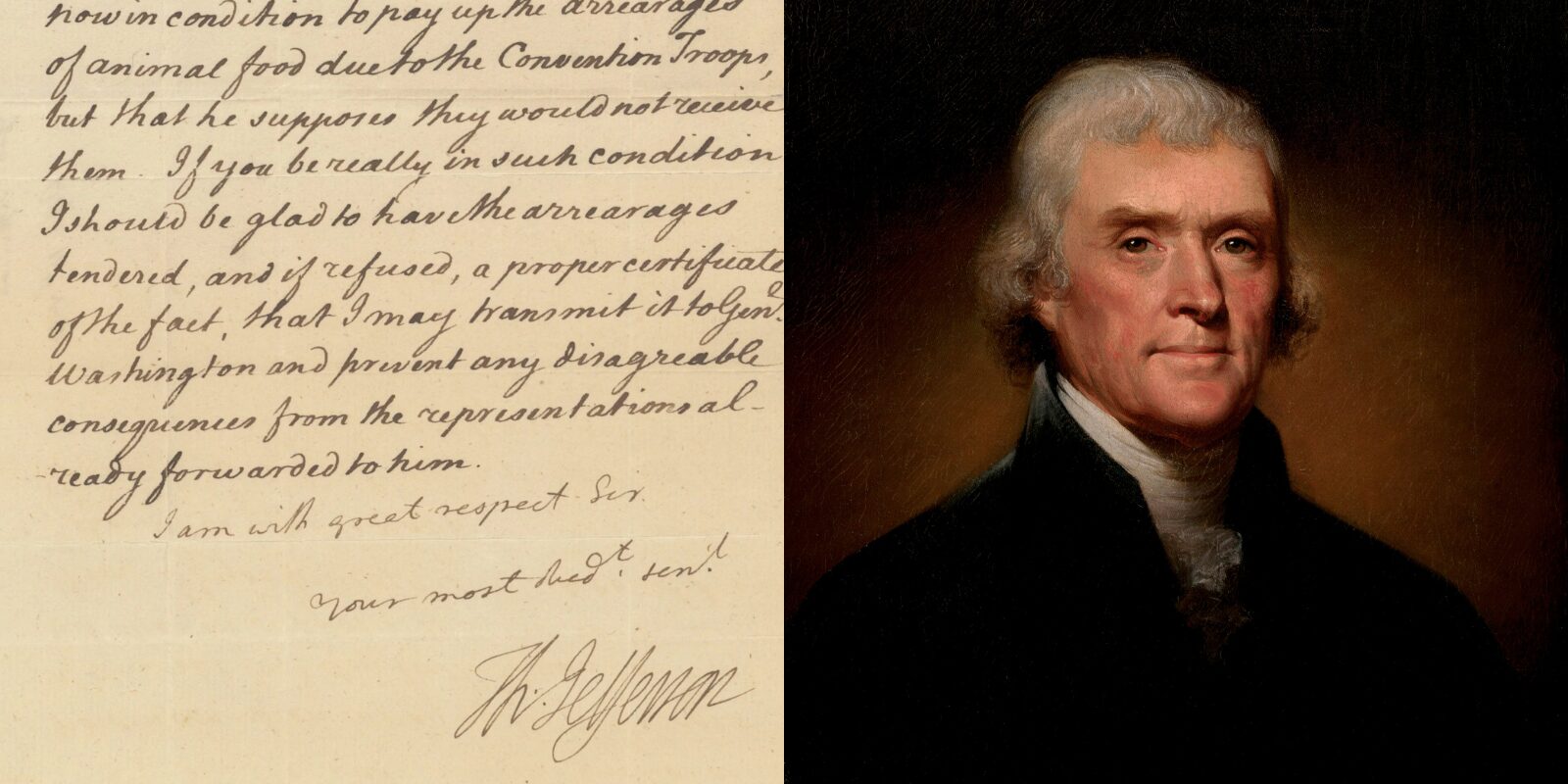Raab’s Guest Curator Tom McMillan Presents a Selection of Historical Documents that Shed Light on America’s Founding
Tom McMillan is a historian and the author of five books, including his newest: The Year That Made America: From Rebellion to Independence, 1775-1776, which examines how America’s Declaration of Independence hinged on seven critical months in 1776 and delivers a fresh perspective on America’s founding. Early reviews have called the book: “Compelling, engrossing”… “A fresh, modern perspective”… “A refreshing and insightful addition to historical literature.”

McMillan also currently serves as co-host of the “Antietam and Beyond” podcast and a facilitator of the Adams County Historical Society’s battlefield leadership program in Gettysburg. In the exhibit below, McMillan includes historical documents mostly from the Revolutionary era, but his interest in Civil War history does not go unnoticed.
“1776: Before and After” Exhibit Curated by Tom McMillan

The Founding Fathers filled so many new and unexpected roles during the Revolutionary era. In this instance, Thomas Jefferson, serving as governor of Virginia in 1780, references “Gen. Washington” as he ponders ways to properly care for British prisoners being held at Charlottesville. Jefferson was only thirty-seven years old at the time; his leadership style was still evolving.

Two days after signing the Judiciary Act of 1789, which created the federal court system – an achievement that is rarely noted – President George Washington signed this commission for Nathaniel Ramsay of Maryland as one of the first U.S. Marshals. Lieutenant Colonel Ramsay was with Washington at Valley Forge and distinguished himself at the Battle of Monmouth; the appointment underscored Washington’s lifelong loyalty to troops who served under his command.

This remarkable letter, sent in secrecy from John Adams at The Hague to John Jay in Paris, contained astonishing news in October 1782: The Dutch were endorsing American independence and the British would now accept peace terms. Much hard work remained, but the significance of the moment was not lost on these two impactful Founders – Adams, who would become the country’s first Vice President and second President, and Jay, who would be the first Chief Justice of the U.S. Supreme Court.
“I need not say to you that it ought not to be known from whence either of them came to you, or to me.”

Six months after the first shots at Lexington and Concord, John Hancock, president of the Continental Congress, issued his first formal call for a colony to raise a regiment for the colonial army (in this case, New Jersey). While delivering that historic instruction, however, Hancock also added a pep talk.
Noting New Jersey’s previously demonstrated “zeal in this great cause,” the president was confident that “you will exert your utmost endeavors to carry the said resolution into execution with all possible expedition.”

One of Benjamin Franklin‘s many contributions of the Revolutionary era was his sometimes clandestine effort to gain French support – considered essential in the quest for independence. A skilled negotiator, and arguably the most famous American in the world at the time, Franklin’s efforts paid off in a groundbreaking agreement shortly after news of the victory at Saratoga reached Paris.

April 1776 marked the first time that a regularly commissioned vessel of the Continental Navy defeated and captured a British ship – the Lexington prevailing over the HMS Edward. John Hancock rejoiced at the news in this recently discovered letter and hoped for more updates from Boston after British forces evacuated.
“You say nothing about Boston,” he wrote. “I want to hear every little stirring there. Pray are the bells taken from the steeples. I long to hear the Sound of those Bells.”

President Lincoln showed both mercy and practicality when he intervened to rescind the dismissal of a Union Army captain for allegedly being drunk on duty. The outcome of the war was very much in doubt, and Lincoln – desperate for victory to hold the country together – wanted experienced officers throughout the ranks. The case was reviewed and the soldier was reinstated.
This was only three months before Lincoln referenced the Declaration of Independence in his iconic Gettysburg Address: “Four score and seven years ago our fathers brought forth on this continent a new nation, conceived in liberty, and dedicated to the proposition that all men are created equal.”
To learn more about author Tom McMillan and Raab’s Guest Curators program, view our press announcement.









































































































